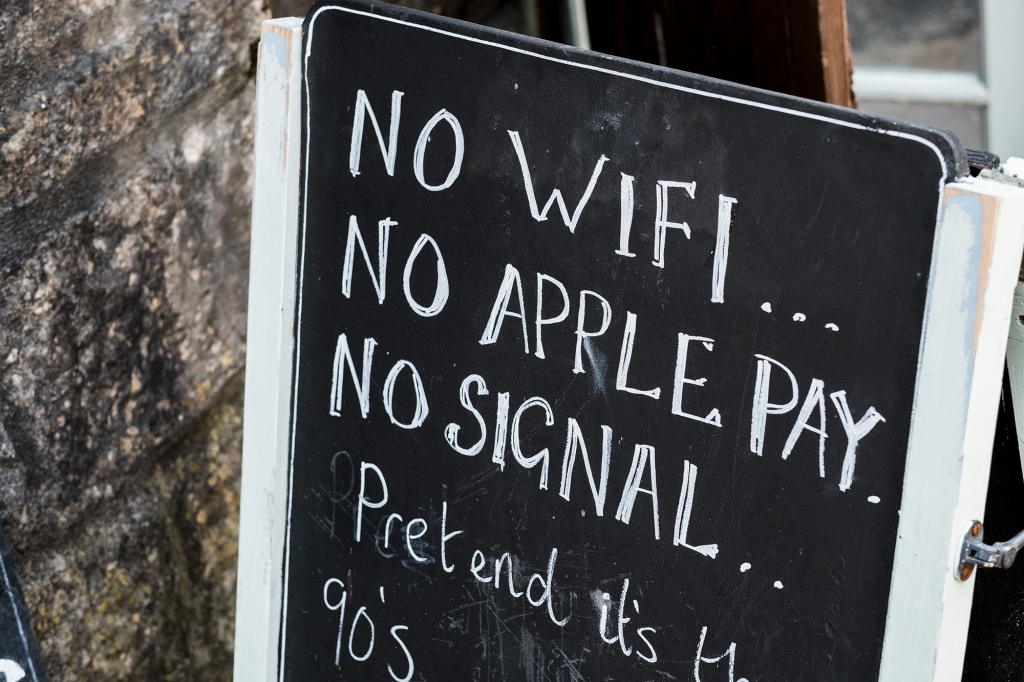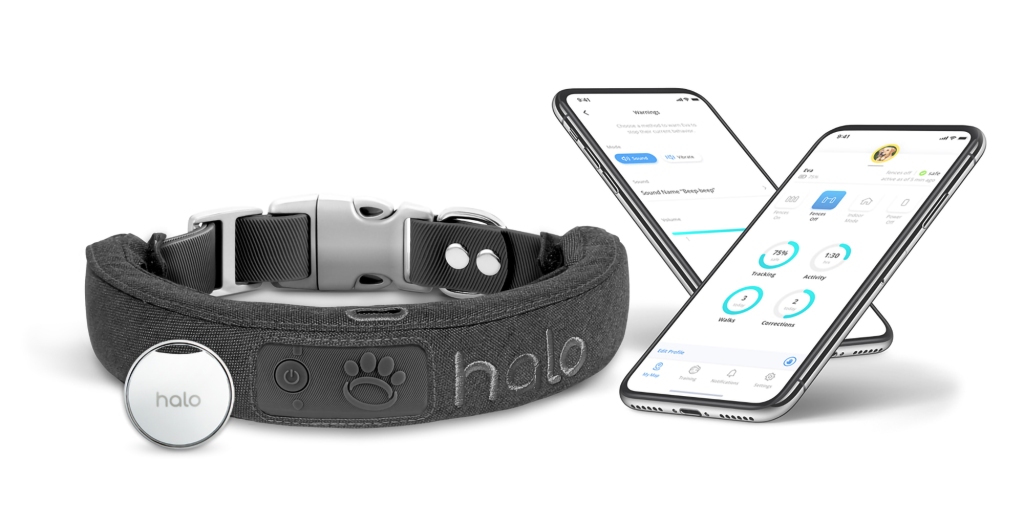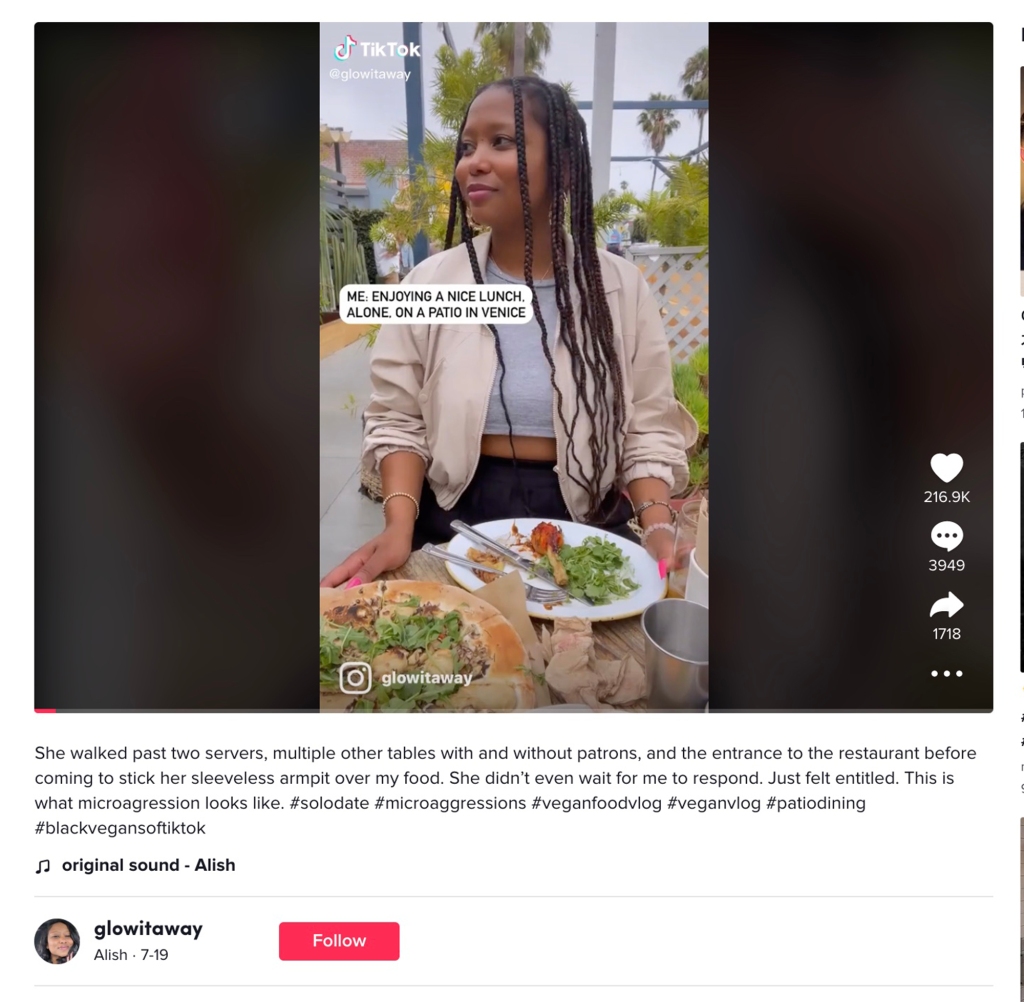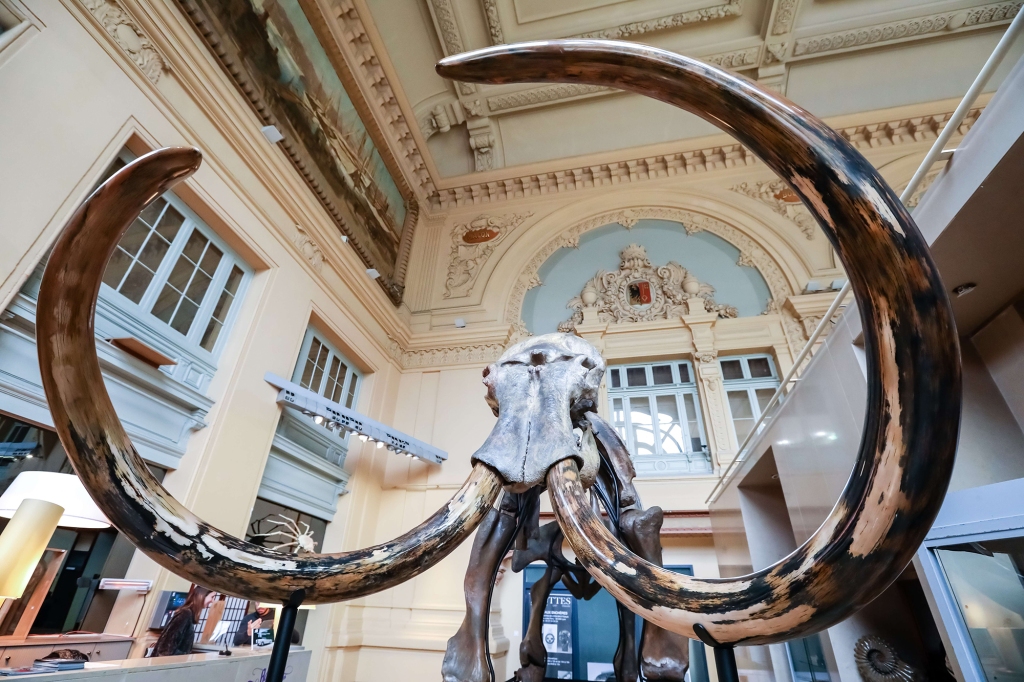10 biggest trends of 2023, from woolly mammoths to daring denim
If 2022 taught us anything, it’s that the things we take for granted today aren’t guaranteed tomorrow. Will next year bring the end of Twitter? The abolition of cryptocurrencies? Affordable Taylor Swift tickets? An entirely new form of democracy? We might not be able to predict what will evolve or even disappear in 2023, but we have a pretty good idea of the trends that could take the world by storm over the next 12 months.
We consulted experts in a broad range of fields to get their take on the big changes that’ll make 2023 so memorable. Here’s what we can look forward to:
LAB-GROWN MEAT
Faux meat cultivated in a laboratory has come a long way since 2013, when Google co-founder Sergey Brin paid $330,000 for the first burger created from a living cow’s stem cells. But things took a big turn earlier this year, when the Food and Drug Administration completed a “pre-market consultation” of lab-grown chicken by California-based Upside Foods and had “no further questions” about the product’s safety, bringing the lab-grown meat one step closer to restaurant menus and grocery store shelves.

An Upside spokesperson told the Post that they’re still awaiting regulatory approval—the USDA still needs to conduct their inspections of manufacturing facility—but their cultivated chicken will soon be on the menu at San Francisco’s Atelier Crenn, where “three-Michelin starred chef Dominique Crenn has put her stamp of approval on our products.”
The big question is, will consumers approve? According to public opinion surveys, only the very old and less educated are resistant to consuming lab-grown proteins. And investors have already put about $2 billion into cell-cultured meat — which includes competing start-ups like Gelatex Technologies and Eat Just — in just the last two years, according to Crunchbase data.
SITTERVISING
Helicopter parenting has been replaced by “sittervising,” in which kids are allowed to play by themselves while the adults, well… sit and do their own thing from afar. It’s like “Lord of the Flies” without the conch shells and parents sitting a few yards away, watching out of the corner of their eyes, ready in case things become worrisome.


“Kids need play without adult intervention,” says Susie Allison, a Seattle mom, former teacher, and Busy Toddler blogger who first coined the word several years ago, though it only took off last summer when she posted about it to her nearly 2 million Instagram followers in July. “(It’s) when children do their best developmental work.”
The buzzword has launched a movement, and even childcare experts are jumping on the bandwagon. “Solitary play has been associated in some studies with creativity,” says Emily Kline, a clinical psychologist from Boston and author of “The School of Hard Talks: How to Have Real Conversations with Your (Almost Grown) Kids.” “If adults are in there as playmates or referees, kids don’t get the chance to try to figure these things out.”
ROBOCOPS
It sure might not seem like police robots are the wave of the future, especially since the NYPD abruptly retired “Digidog,” a 70-pound robot dog, after public outcry in 2021 and Mayor Bill de Blasio called the robots “creepy (and) alienating.” And then there’s the San Francisco fiasco from this December, when the city quickly backtracked on plans to introduce armed robot cops with explosives after protesters took to City Hall.

But what’s getting decried on the coasts is picking up steam elsewhere in the country. SPOT, the same brand of robot dog fired in New York, made its debut in the St. Petersburg, Fla., police department in early 2022, and in October helped rescue a 3-year-old child taken hostage.
In May, the Columbus Police Department was granted over $65,000 by the Nebraska Crime Commission to purchase an Avatar III tactical robot, which features a human-like articulated arm that can, among other nifty abilities, open doors and maneuver up and down staircases.
“If Americans want to save the effort of opening their refrigerator door by having the refrigerator tell them what’s inside, a police officer should certainly have access to remote technology to tell them who or what is in a dark building,” says Joel F. Shults, a retired police chief from Colorado and founder of the National Center for Police Advocacy.
OFF-THE-GRID VACATIONS
Almost half (44 percent) of global travelers are looking for “off-the-grid” experiences in 2023, according to a new Booking.com poll, which feature travel to destinations where modern-cons like smart phones and WiFi are verboten.


“Many travelers are seeking to commune with the world on their terms—going solo, going alone, sans phones, push notifications and technology,” says Tom Marchant, co-founder of the luxury tour operator Black Tomato, based in Manhattan.
The firm’s personalized “Get Lost” expeditions — which have helped at least one customer travel to Mongolia to hang with nomadic herders as they move their winter camp — have seen a 78 percent increase in inquiries in 2022 alone.
Summit Prairie, a 40-foot-high fire tower in the middle of the Umpqua National Forest in southern Oregon, rents for $225 a night and has no clocks, television, wi-fi, and unless you book fast, availability. Their window for April-to-July bookings opens in late February, and “it usually sells out within a few seconds,” says Dabney Tompkins, who’s run the property with her husband since 2009. “We always get what I’m sure are auto generated emails from Airbnb that say, ‘If you’d offer Wi-Fi, your place would be more appealing,’” she laughs. “Well, no it would not be!”
DENIM
Did the rugged cowboys of Yellowstone have anything to do with denim’s renaissance? Who knows, but dungarees are definitely back in fashion like never before.


“Denim was everywhere on the runways this fall, giving us a sneak-peek into how explosive the trend will be looking ahead,” says New York stylist Elizabeth Kosich, who noticed fancy jeans from designers such as Glenn Martens and Everard Best, and style icons like Emily Ratajkowski, Lori Harvey, Ellie Goulding, Megan Fox and Julia Fox.
Some of denim’s comeback was thanks to the pandemic, she says. “It had a profound effect on redefining workplace fashion and our collective reluctance to change out of work-from-home uniforms.”
But fashion trends also originate from innovation. “Strides toward a more sustainable denim industry have yielded cleaner dyes, less water use and more natural fibers,” Kosich says, “making new takes on ombré and distressed washes on-trend now.” If you’re a fan of cargo jeans, baggy Y2K-style jeans, and all-denim “Canadian tux” — like the kind Khloé Kardashian recently sported to her 282 million Instagram followers — 2023 promises to be a very good year.
CASSETTE TAPES
Even David Sax, author of the new book “The Revenge of Analog: Real Things and Why They Matter,” is surprised by the resurgence of cassettes.
“Unlike records, they’re not beautiful looking, or high fidelity, or tactile,” he says. “They’re kind of cheap and disposable. But that’s the advantage and the reason for their growth.”

Tape sales doubled in 2021, jumping from 173,000 to 343,000 sold, and have been climbing ever since (though that’s still a drop in the bucket compared to cassettes’ peak years, such as 1985 when 339.1 million cassettes were sold nationwide, compared to 167 million vinyl records and 22.6 million CDs).
The trend isn’t being driven by nostalgia. Top-selling artists like Taylor Swift, Harry Styles, and Billie Eilish—none of whom were alive during the cassettes’ heyday—are releasing their new albums on cassette. Sax suspects the appeal of cassettes is their simplicity.
“(They’re) untethered from subscription plans, ads, and digital distractions,” he says. “It’s entirely customizable (mix tapes!), social (you can trade with friends), and hands on (decorate the case, then get that pencil ready to wind the tape back).”
FREE RANGE DOGS
Leashes are so last decade. Even invisible fences feel too restrictive for modern pooches.
A wave of GPS-tracking collars for dogs, with names like Whistle, Fi, and PetPace, allow our pets to have the illusion of unlimited freedom.


Celebrity dog trainer Cesar Millan, who helped develop the Halo GPS-tracking collar, tells the Post such devices are perfect for a younger generation that’s “living more transient lifestyles.”
Today, we want to take our dogs with us everywhere, and that includes the office. A whopping 94% of Americans approve of pets in the workplace, according to a recent LiveCareer survey. And with many still reluctant to return to the office, 52% said pet-friendly policies are employer must-haves.
Letting pets coexist with employees, and roaming the halls leash-free, are rapidly becoming expected office perks, and some companies in Japan are even opening “dog offices” as a way of luring back Gen Z workers.
SOLO DINING
Don’t have a plus-one for Valentine’s Day this year? No problem! Dirt Candy, the Michelin-starred vegetarian restaurant on New York’s Lower East Side, has been offering a special Valentine’s Day tasting-menu-for-one just for singles for over a decade. It’s a trend that’s starting to take off, and not just during special holidays.


Solo diners now account for 35 percent of restaurant visits (followed by 27 percent for parties of two), according to the most recent data from market research company NPD Group.
Social media, of course, is in on the action, with 138 million TikTok views for videos with hashtags like #SoloDate.
The stigma of eating out alone is at least partly driven by the rise in singlehood, suggests Megan Bruneau, a therapist and executive coach who’s written about loneliness. “We currently have the highest number of singles in history,” she says, pointing to Pew Research that roughly four-in-ten adults ages 25 to 54 are single, a 30% increase since 1990.
But party for one doesn’t mean a pity party. “People are entertained by technology and therefore aren’t really alone,” she adds. “They’re taking their phone—and all the people in it—to a fancy dinner.”
HOOPING
Melinda Rider, the founder and owner of Hoopologie—a Boulder, Colorado-based hula hoop supply company—saw demand for hula hooping surge during the pandemic.

“It was something you could do at home during quarantine,” she says, adding that she assumed that sales bump would taper off eventually. Just the opposite happened. There’s been “a steady increase in demand” for hula hoops in the last year, Rider says, much of it thanks to social media—especially TikTok, where the hashtag #hulahooping has jumped to 82 million views and counting.
Celebs have joined the hooping frenzy, from “Ted Lasso” actor Brendan Hunt to pop superstar Lizzo, who attempted to recreate the moves of hula-hooping pro (yes, that’s a real job description now) Deven Zimmer on TikTok this past May. (Zimmer responded, “We got @lizzobeeating HOOPING!”) The exercise trend has spawned a movement, with global conventions and dozens of hooping wellness retreats with names like Hoop Dream and Hoop Away.
THE RETURN OF DINOSAURS
The dinosaurs have been extinct for roughly 65 million years, but you might just get a chance to see a wooly mammoth in the flesh, “Jurassic Park”-style, soon enough.

Thanks to gene-editing tools like CRISPR, the Texas-based biotech startup Colossal Biosciences—backed by millions from investors like Peter Thiel, Tony Robbins, Paris Hilton, and the CIA — is getting closer to genetically resurrecting the mammoth, and expect to complete “about 50% of the edits” of an actual mammoth embryo by next year, says company CEO and founder Ben Lamm.
It may be sooner than that, thanks to new advances being made at lightning speed—researchers found DNA in dinosaurs fossils in 2020, and de-extinction group Revive & Restore have already cloned a previously extinct US species, the black-footed ferret.
Beth Shapiro, a paleogeneticist at the University of California Santa Cruz and author of “How to Clone a Mammoth,” calls the efforts “a combination of curiosity and a desire to reverse some of the ecological devastation that our species brought about as we came to dominate the planet.”
Read the full article Here


